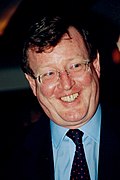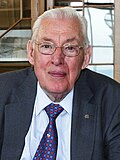|
1998 Northern Ireland Assembly election
The 1998 Northern Ireland Assembly election took place on Thursday, 25 June 1998. This was the first election to the new devolved Northern Ireland Assembly. Six members from each of Northern Ireland's eighteen Westminster Parliamentary constituencies were elected by single transferable vote, giving a total of 108 Members of the Legislative Assembly (MLAs). Background and campaignThe election was the culmination of the years long Peace Process that had resulted in the Good Friday Agreement on 10th of April 1998. The Agreement had been the result of multi-party talks in Northern Ireland, as well as talks with the British and Irish governments. The Agreement would need to be endorsed by referendums in Northern Ireland and the Republic of Ireland that were scheduled for the 22nd of May.[1] Of the parties who'd won election in 1996 to the Northern Ireland Forum only the DUP and UK Unionist Party opposed the Agreement, encouraging a No vote in the referendum. Whilst the UUP officially supported the Agreement, there was significant dissent within its ranks. Several high profile members, including six of their ten MPs, opposed the Agreement. On 18th of April the ruling council of the UUP backed the Agreement with 540 delegates in favour and 120 against. On 24 April the loyalist paramilitary organisation, the Ulster Defence Association announced that it was in support of the Agreement. However on the 1st of May the Orange Order came out in opposition.[2] At the Sinn Féin Ard Fheis on the 10th of May the party voted to end its 77 year policy of abstentionism from NI government institutions. However, it would continue to refuse to take any seats won at Westminster elections.[3] Two major issues during both the referendum and subsequent Assembly campaign was that of decommissioning and release of paramilitary prisoners. This was cemented when the IRA released a statement saying that it would not agree to decommissioning its weapons.[4] A poll released on the 15th of May showed that a majority of those planning on voting No were going to do so due to the release of prisoners. On the same day the Ulster Volunteer Force announced a ceasefire in opposition to the Agreement, encouraging a No vote in the referendum.[5] On the 19th of May, just three days before the referendum was to be held, U2 held a concert at Belfast's Waterfront Hall in support of the Yes campaign. John Hume, the SDLP leader, and David Trimble, the UUP leader, attended and appeared on stage. Bono held their hands aloft in an image that became iconic of the campaign. The concert was the first time the two men had campaigned together and is credited with giving the Yes campaign a crucial boost in the final days of the campaign.[6] In the end the Agreement was endorsed by the people of Northern Ireland with 71.1% voting in favour on a turnout of 81.1%.[7] Compared to the referendum campaign, the Assembly campaign was much more subdued. However, the issue of decommissioning continued to be a major issue. Following a meeting with the Northern Ireland Secretary, Mo Mowlam, Vice President of Sinn Fein, Martin McGuinness, warned against "falling into the trap of trying to make decommissioning the most important item on the agenda". On the 4th of June a Northern Ireland Office memo on the upcoming Independent Commission on Policing was leaked, resulting in controversy as it contained none of the people nominated by the Irish government on the behalf of nationalists. ResultsThe SDLP topped the polls, receiving about 22 percent of the votes. It won a plurality of the first preference votes. This was the first time a nationalist party had ever achieved this in Northern Ireland's history.[8] It was a feat that would not be repeated until the 2022 Assembly elections when Sinn Féin also topped the poll. Despite the use of STV, a form of proportional representation, the UUP won four more seats than the SDLP. This has been attributed [9] to several reasons, including:
Despite a nationalist party topping the poll with a plurality of votes, unionist parties won a majority of both seats and votes. Of the 108 seats available, 58 designated as unionist, 42 as nationalist and 8 as other. In terms of first preference votes unionist candidates won 50.6% of the vote, compared to nationalists 39.8% and others 8.9% of the vote.[Note 1] Within unionismWhilst the UUP retained its position as the largest party of unionism, its vote share of just 21.25% was the lowest it had ever achieved.[10] The DUP managed to finish just 3.24% behind the UUP, which was considered a significant success. Of the smaller unionist parties the UK Unionist Party managed to win five seats, and the Progressive Unionist Party two seats. This was an improvement for the UKU compared to the 1996 Northern Ireland Forum election, whilst the PUP retained its two seats. The Ulster Democratic Party however failed to win any seats in the Assembly and the party dissolved before the 2003 Assembly election. In addition to the four unionist parties elected, three independent unionists were also elected to the assembly. Within nationalismThe election was considered a success for the SDLP, which not only secured the largest vote share, but also increased its number of seats compared to the 1996 Forum elections. Sinn Féin also had a successful election by increasing its share of both votes and seats. Unlike unionism, where the vote was split between several different parties, the nationalist vote was split between just two and there were no significant independent nationalist campaigns. Other partiesThe Alliance Party had a disappointing night with their vote share remaining unchanged and the net loss of one seat. The election continued the pattern of the Alliance Party winning seats only in heavily unionist areas. The NI Women's Coalition had a successful night, winning two seats. This would be the only Assembly election in which the party would win any seats. [11] Results summary 
The seat and vote change in the table are in comparison to the 1996 Northern Ireland Forum elections.
Distribution of seats by constituencyParty affiliation of the six Assembly members returned by each constituency. The first column indicates the party of the Member of the House of Commons (MP) returned by the corresponding parliamentary constituency in the 1997 United Kingdom general election under the first-past-the-post voting method. A number highlighted in bold indicates the party won the highest number of seats in that constituency.
See alsoReferences
Manifestos
|
||||||||||||||||||||||||||||||||||||||||||||||||||||||||||||||||||||||||||||||||||||||||||||||||||||||||||||||||||||||||||||||||||||||||||||||||||||||||||||||||||||||||||||||||||||||||||||||||||||||||||||||||||||||||||||||||||||||||||||||||||||||||||||||||||||||||||||||||||||||||||||||||||||||||||||||||||||||||||||||||||||||||||||||||||||||||||||||||||||||||||||||||||||||||||||||||||||||||||||||||||||||||||||||||||||||||||||||||||||||||||||||||||||||||||||||||||||||||||||||||||||||||||||||||||||||||||||||||||||||||||||||||||||||||||||||||||||||||||||||||||||||||||||||||||||||||||||||||||||||||||||||||||||||||||||||||||||||








